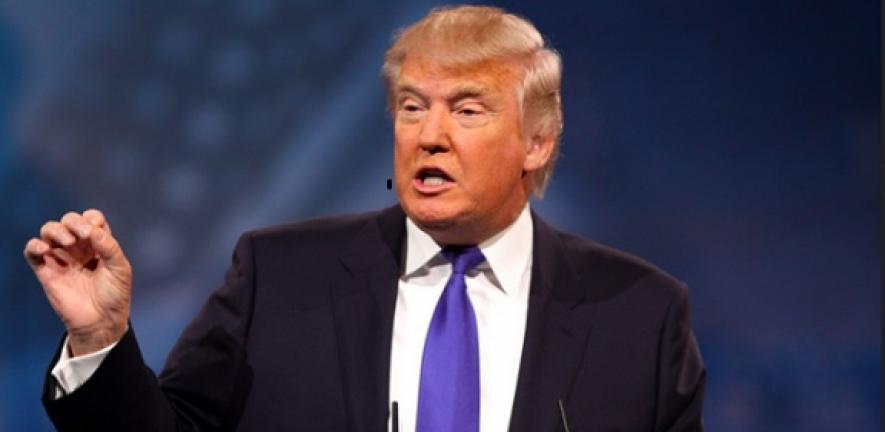
Professor Andrew Preston examines the origins of the first hundred days as a measure of presidential success in American politics.
Professor Andrew Preston examines the origins of the first hundred days as a measure of presidential success in American politics.
In American politics, the Hundred Days are meant to be a period of Rooseveltian success, not Napoleonic failure.
Andrew Preston
The concept of the Hundred Days was first used to describe the period between Napoleon’s return from exile and his final defeat at Waterloo, in 1815. As a marker of the president’s first months in office, a “honeymoon” period when conditions for him to enact much of his agenda are supposed to be most advantageous, it has come to take on a rather different meaning in modern American politics.
Franklin D. Roosevelt, who was in the Oval Office from 1933 to 1945, was the first president to have a period known as “The Hundred Days.” He used it to usher in a series of legislative reforms that began the implementation of the New Deal, a domestic reform program which totally refashioned America in FDR’s image and made his party, the Democrats, the dominant political force in the country for decades to follow.
In American politics, the Hundred Days are meant to be a period of Rooseveltian success, not Napoleonic failure. It is supposed to mark a period of dramatic change so that America comes to reflect the values and goals of its new president. It is not supposed to end in the president’s own Waterloo. Every president wants to be a Roosevelt, not a Napoleon.
Roosevelt’s Hundred Days have become the stuff of legend, and books on the period—including a smart, superbly written account by a noted Cambridge expert of American history, Professor Tony Badger—incorporate the phrase in their title. This is because the Hundred Days had more of a Napoleonic spirit than FDR himself would have liked to admit, conveying a gut-level instinct for action, ambition, and above all grandeur. The Hundred Days are supposed to be consequential, a period in which people realize they are living through an important part of history. They are supposed to be a reach for glory.
With the advent of the New Deal, FDR made good on this promise of a dynamic Hundred Days. Roosevelt worked with Democratic majorities in both houses of Congress to pass legislation on a wide number of problems caused by the Great Depression, from the banking crisis to widespread poverty and unemployment to the collapse of agriculture and industry. Within three months, many of the staples of the New Deal were set up. Not all would last, but Roosevelt and congressional Democrats showed that they had a plan and were doing what they could to enact it, quickly.
Few historians accept that the New Deal cured the Depression—the largest government stimulus program in world history, also known as the Second World War, did that instead. Nor did FDR have a coherent ideological vision: he was too experimental and pragmatic for that.
But by showing that he cared, and that he was willing to do whatever it took to help the American people in their time of suffering, he transformed himself into the most popular president in American history. After Roosevelt’s first victory in 1932, Democrats won six of the next eight presidential elections and controlled both houses of Congress for all but four of the next forty-eight years.
The Hundred Days started something pretty special. It’s no surprise, then, that presidents from both parties who followed in Roosevelt’s wake have sought their own dynamic start. Most haven’t been successful, and many have seen their presidencies nearly ruined from disasters right at the outset.
John F. Kennedy oversaw the humiliating debacle at the Bay of Pigs on April 17, 1961, his 94th day in office, while Ronald Reagan was shot and nearly killed on March 30, 1981, his 69th day. Neither tragedy did much damage to presidents regarded, at the time and ever since, as popular and successful. On the other hand, the president who self-consciously strived hardest to emulate FDR’s rapid achievements, Lyndon B. Johnson, saw the early hopes of his presidency destroyed by the war in Vietnam and the deterioration of race relations at home.
In other words, the Hundred Days marker is a poor gauge of presidential success. Roosevelt set an example of a quick-start, dynamically successful presidency, yet it remains pretty much the only example. President Donald Trump, who, despite Republican majorities in Congress, has accomplished virtually nothing of his agenda so far, may have had a good point when he recently tweeted to complain about being held to “the ridiculous standard of the first 100 days.”
The problem is, it was Trump himself who set that standard. All through the presidential campaign last year, and then during the transitional period between the election in November and the inauguration in January, Trump not only promised quick action but quick results. The wall along the border with Mexico, supposedly adverse trade deals, ISIS—all were going to be solved “immediately” or “on day one.” At a campaign rally in Florida, in October, he said he would begin to repeal and replace Obamacare on his “first day in office. … It’s going to be so easy.”
It hasn’t been so easy, of course, certainly not for President Trump. Only time will tell whether that means his presidency will ultimately end with him as a Roosevelt or a Napoleon. But he’s not off to a good start.
Andrew Preston, Professor of American History, is the author of Sword of the Spirit, Shield of Faith: Religion in American War and Diplomacy (Knopf, 2012)

The text in this work is licensed under a Creative Commons Attribution 4.0 International License. For image use please see separate credits above.




